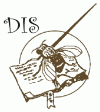



Perez-Chiesa, Y. 1999. Incidence of Drosophila melanogaster flies with melanotic tumors for demonstrating conditionality, penetrance and variable expression.
Dros. Inf. Serv. 82: 131-132. View PDF
A sex-linked, temperature-sensitive melanotic tumor mutation in Drosophila melanogaster, tu(1)Szts (Rizki and Rizki, 1980) is excellent for demonstrating conditionality, penetrance and variable expression with changes in temperature. It also allows for learning the chi-square contingency test and for discussing dosage compensation in Drosophila, as well as other aspects of insect physiology. As reported by Rizki and Rizki (1980) tu(1)Szts larvae develop melanotic tumors at 26°C, whereas 18°C inhibits tumor formation. However, penetrance may vary in melanotic tumor strains depending also on genetic background, crowding conditions and food media used (Sparrow, 1978).
Experimental Procedure: Students are given two stocks of D. melanogaster: wild type, non-tumor forming strain, and tu(1)Szts. They set up two cultures of each stock and place them in incubators: one culture of each at 18°C, the others at 26°C. Three days later the parents are removed and their progeny is allowed to continue development at the same temperature at which they started. After eclosion students classify the flies in terms of sex and mutant phenotype: presence of melanotic tumors. The tumors are usually found in the abdomen and less frequently elsewhere. The students are asked to determine whether there are significant differences in the incidence of flies with tumors between the sexes and between the stocks used at each temperature. We have done the experiment at 22°C vs 29°C; there will be tumor formation at 22°C, but the incidence of flies with tumors is still significantly different from that of flies grown at 29°C. Cultures can be coded to avoid bias.
References: Rizki, T.M., and R.M. Rizki 1980, Wilhelm Roux’s Archives 189: 197-206; Sparrow, J.C., 1978, In: The Genetics and Biology of Drosophila (Ashburner, M., and T.R.F. Wright, eds.), volume 2b: 277-313. Academic Press, London.